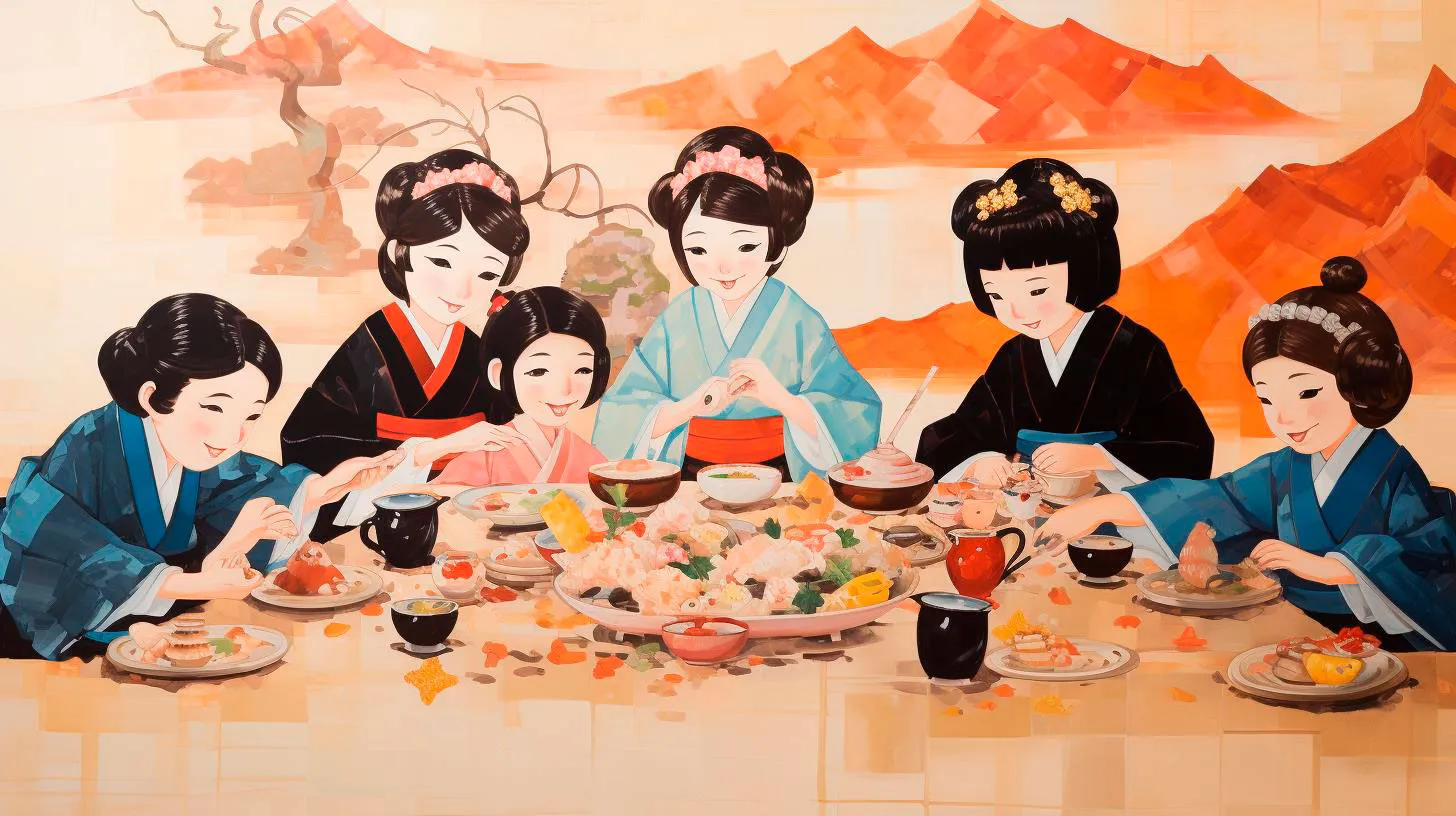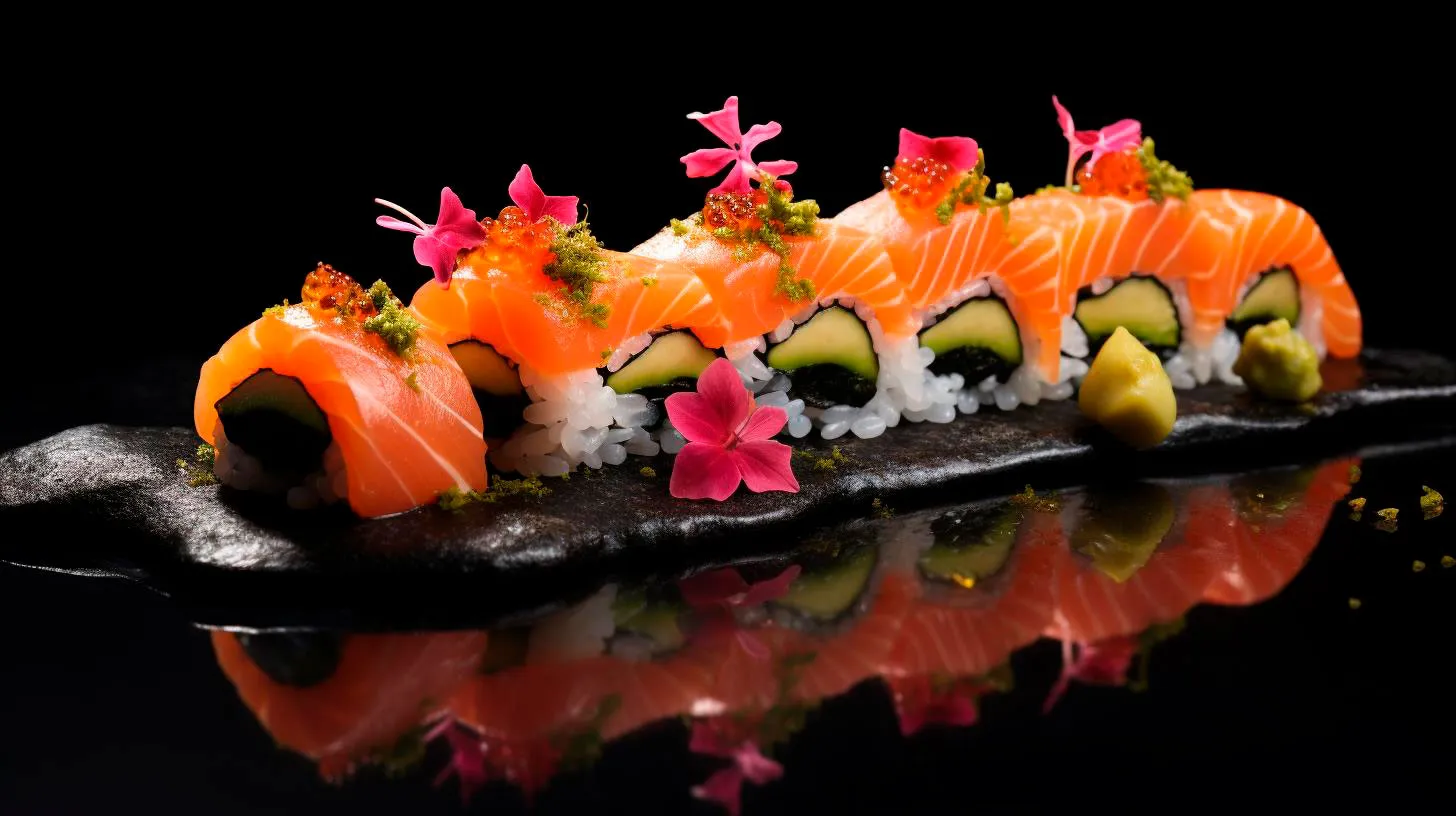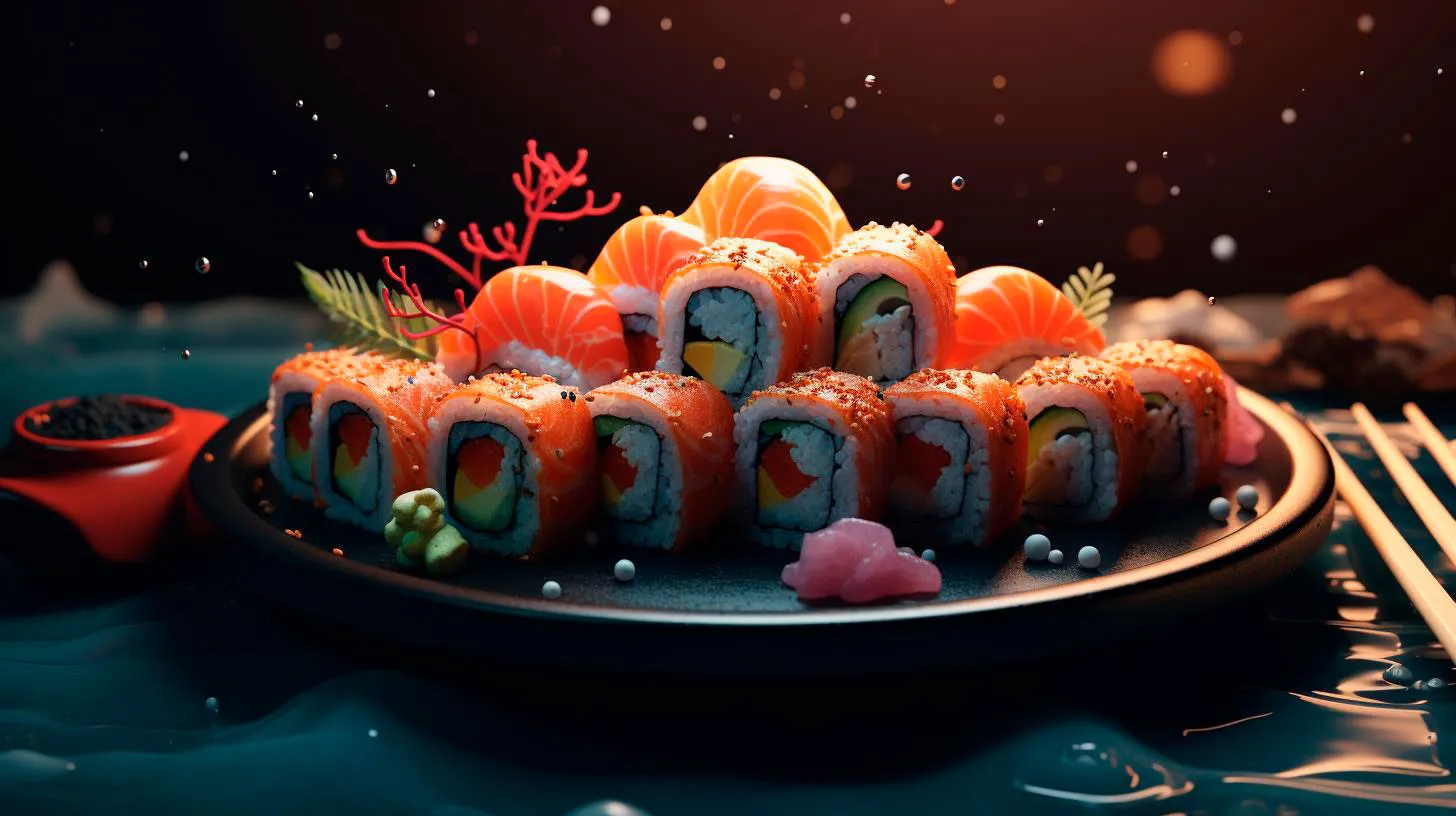Gastronomic Journeys: Reliving History through Ancient Regional Sushi Recipes
The Origin of Sushi
The history of sushi dates back over 1,300 years. Originally, sushi was created as a way to preserve fish by fermenting it with rice. The fermented fish, known as nare-sushi, was then discarded, and only the rice was consumed. Over time, sushi evolved, and the rice began to be seasoned with vinegar, giving birth to the modern-day sushi we know and love.
Key Takeaway:
- Sushi originated as a preservation technique for fish in Southeast Asia.
- The fermentation process used in early sushi helped develop flavors.
- The addition of vinegar to rice gave rise to modern sushi.
Ancient Regional Sushi Recipes
As sushi spread throughout Japan and the world, it acquired different regional characteristics, showcasing the diverse culinary traditions of each area. Let’s explore some ancient regional sushi recipes that have stood the test of time.
1. Edomae Sushi
Originating in the bustling streets of Tokyo, Edomae sushi is a traditional style that emerged during the Edo period (1603-1868). Edomae sushi focuses on using locally sourced, seasonal ingredients, with an emphasis on simplicity and freshness. The toppings typically include fish and seafood sourced from Tokyo Bay, creating a unique flavor profile.
Key Features:
- Local and seasonal ingredients
- Simple and fresh flavors
- Popular toppings from Tokyo Bay
2. Kansai Oshi-zushi
Hailing from the Kansai region, Kansai oshi-zushi is known for its rectangular shape and vibrant colors. This style of sushi involves pressing vinegared rice and various toppings into a wooden mold. The toppings can range from fish and vegetables to pickled daikon radish, resulting in a visually appealing and flavorful dish.
Key Features:
- Rectangular-shaped sushi
- Colorful and visually appealing
- Wide variety of toppings
3. Chirashi-zushi
Chirashi-zushi, meaning “scattered sushi,” finds its roots in the Kansai and Tokai regions of Japan. This style of sushi is a festive dish, traditionally enjoyed during special occasions. Chirashi-zushi is made by combining vinegared rice with a colorful medley of toppings, including vegetables, cooked fish, and tamagoyaki (Japanese omelette).
Key Features:
- Colorful and festive presentation
- Mixture of various toppings
- Suitable for special occasions
Advantages of Exploring Ancient Regional Sushi Recipes
By delving into ancient regional sushi recipes, food enthusiasts can experience a deeper connection with history and culture. Here are some advantages of exploring these delightful culinary traditions:
1. Cultural Appreciation
By learning about the different regional sushi styles, individuals gain a better understanding of the unique traditions and customs associated with each area. It allows us to appreciate the cultural diversity behind this globally beloved cuisine.
2. Culinary Creativity
Ancient regional sushi recipes offer inspiration for culinary experimentation. Incorporating traditional techniques and ingredients into modern dishes can lead to innovative sushi creations that captivate the taste buds of adventurous food lovers.
3. Regional Flavors
Each regional sushi style brings its own distinct flavors to the table. Exploring these recipes enables us to savor the nuanced taste profiles, honoring the local ingredients and cooking methods cherished by generations.
Key Takeaway:
- Exploring ancient regional sushi recipes provides a deeper cultural appreciation.
- It sparks culinary creativity and encourages innovation in sushi-making.
- Regional sushi styles highlight unique flavors and local ingredients.
Embark on a gastronomic journey and relive history through ancient regional sushi recipes. By embracing the diverse styles and flavors of this ancient culinary art, we can truly appreciate the rich heritage behind each bite of sushi. Whether you find yourself savoring Edomae sushi in the bustling streets of Tokyo or enjoying Kansai oshi-zushi’s vibrant colors, let these ancient recipes transport you to a world of gastronomic wonders.
Time-Traveling Tastebuds Rediscovering Authentic Regional Sushi Varieties
The Historical Evolution of Sushi
Sushi, as we know it today, has evolved from a traditional practice in ancient Japan. It originated as a preservation method for fish during the 4th century BC, where fish was salted and fermented with rice to extend its shelf life. Over the centuries, sushi underwent a transformation, and various regional styles emerged, each with its distinct flavors and techniques.
1. Edomae Sushi
Edomae sushi refers to traditional Tokyo-style sushi, which rose to prominence during the 19th century. It focused on utilizing the freshest fish caught in the nearby Edo Bay. Key characteristics and benefits of Edomae sushi include:
- Emphasizes simplicity and minimalism in its presentation
- Highlights the natural flavors of the fish
- Uses a specific type of rice seasoned with vinegar, sugar, and salt
- Key Takeaway: Edomae sushi celebrates the essence of fresh fish with its simple yet exquisite flavors.
2. Osaka-style Sushi
Osaka, the culinary capital of Japan, has its own unique take on sushi. Osaka-style sushi, also known as “oshizushi,” is a pressed sushi variant that incorporates a combination of fish, rice, and other ingredients. Notable features of Osaka-style sushi include:
- Pressing the sushi in a wooden mold to create a beautiful rectangular shape
- Layering various ingredients to add texture and flavor
- Adding a sweet and tangy vinegar-based sauce called “oshi-su”
- Key Takeaway: Osaka-style sushi offers a delightful medley of flavors and textures, providing a distinct culinary experience.
3. Hakozushi from Kyoto
Kyoto, known for its rich cultural heritage, showcases its sushi variety called “hakozushi.” Hakozushi is characterized by its elegant and sophisticated presentation, making it a feast for both the taste buds and the eyes. Notable aspects of Hakozushi include:
- Arranging individual ingredients meticulously in a rectangular wooden mold
- Using vinegared fish, vegetables, and even pickled plum as fillings
- Incorporating a blend of vinegared rice and traditional dashi
- Key Takeaway: Hakozushi combines artistic presentation with bold flavors, allowing you to savor sushi with all your senses.
The Benefits of Rediscovering Regional Sushi Varieties
While sushi has become a global phenomenon, exploring the distinct regional varieties of this culinary art form brings several advantages:
- Preserving Culinary Heritage: Rediscovering regional sushi varieties ensures the preservation of traditional techniques and flavors that have been passed down for generations.
- Enhancing Cultural Understanding: Each regional sushi style tells a unique story, reflecting the culinary history, customs, and traditions of its origin. Exploring these varieties fosters a deeper understanding of diverse cultures.
- Expanding Flavor Profiles: By exploring regional sushi varieties, you can broaden your palate and experience the multitude of flavors, textures, and combinations that each style offers.
- Key Takeaway: Rediscovering regional sushi varieties provides a profound gastronomic experience, allowing you to appreciate the intricate nuances of different sushi styles.
When it comes to sushi, there is so much more beyond the familiar California rolls and spicy tuna rolls that dominate many menus worldwide. By embarking on a journey through historical regional sushi varieties, you can indulge in a captivating blend of flavors and culture that will leave you with a newfound appreciation for this ancient delicacy.
Culinary Archaeology: Unveiling Ancient Regional Sushi Traditions in Japan
In this article, we will dive deep into the rich historical tapestry of sushi, exploring its regional variations and uncovering the secrets hidden within its creation.
The Birth of Sushi
The roots of sushi can be traced back over 2,000 years to Southeast Asia, where fermented rice was used to preserve fish. This preservation method, known as narezushi, was introduced to Japan around the 8th century. Over time, the technique evolved, and various sushi styles emerged, each with its own distinctive flavors and presentation.
Let’s take a closer look at the regional sushi traditions that have fascinated food enthusiasts for centuries:
1. Edomae Sushi
Hailing from Tokyo, Edomae sushi is perhaps the most well-known style of sushi worldwide. Originating in the Edo period (1603-1868), Edomae sushi showcases the simplicity and elegance of traditional nigiri sushi. Key features of Edomae sushi include:
- Use of fresh seafood sourced from Tokyo Bay
- Minimal seasoning to let the natural flavors shine
- Hand-pressed vinegared rice
With its emphasis on showcasing the quality of the fish, Edomae sushi remains a favorite among sushi connoisseurs.
2. Kansai-style Sushi
Originating from the Kansai region, which includes cities like Osaka, Kyoto, and Kobe, Kansai-style sushi offers a unique twist to the traditional sushi experience. Notable characteristics of Kansai-style sushi include:
- Use of mackerel as a key ingredient
- Inclusion of regional ingredients such as cucumber and shiso leaves
- Stronger flavors with the addition of soy sauce and various toppings
Kansai-style sushi appeals to those who prefer bolder and more robust flavors in their sushi.
3. Hakodate-style Sushi
Hailing from the northern city of Hakodate in Hokkaido, Hakodate-style sushi is heavily influenced by the region’s abundant seafood offerings. Key elements of Hakodate-style sushi include:
- Usage of regional delicacies like sea urchin (uni) and salmon roe
- Incorporation of local ingredients such as kelp and sea cucumber
- Unique vinegared rice seasoned with red vinegar
Hakodate-style sushi offers a delightful contrast of flavors, showcasing the wealth of the northern seas.
4. Chiba-style Sushi
Located adjacent to Tokyo, Chiba prefecture has its own distinct style of sushi. Chiba-style sushi highlights the beauty of simplicity and freshness with the following features:
- Wide variety of seafood from Tokyo Bay
- Preference for smaller, bite-sized nigiri sushi
- Focus on highlighting natural flavors with minimal seasoning
Chiba-style sushi is renowned for its delicate and refined taste, attracting sushi enthusiasts seeking a more subtle sushi experience.
Key Takeaways
When it comes to sushi, the regional variations and traditions add depth and complexity to this beloved cuisine. Whether you prefer the simplicity of Edomae sushi, the bold flavors of Kansai-style sushi, the unique ingredients of Hakodate-style sushi, or the delicacy of Chiba-style sushi, each style offers a culinary adventure that is worth exploring.
By understanding the origins and characteristics of these regional sushi traditions, we gain a deeper appreciation for the craftsmanship and culture behind this iconic Japanese dish. So the next time you indulge in a plate of sushi, take a moment to savor not only the flavors but also the rich history it represents.
Unearthing Forgotten Delicacies: Ancient Sushi Creations from Japan
In this article, we will unearth these delicate delicacies from Japan’s past and explore their unique flavors and cultural significance.
The Historical Journey of Sushi
Sushi dates back thousands of years and was initially created as a means to preserve fish by fermenting it with rice and salt. Over time, the fermentation process was abandoned, and sushi gradually transformed into the fresh and flavorful dish we know today. However, there are several ancient sushi creations that offer a tantalizing glimpse into Japan’s culinary traditions.
1. Narezushi (Salted Fish Sushi)
Narezushi, also known as the ancestor of modern sushi, was invented in Japan around the 3rd century AD. It involves fermenting fish and rice together by packing them in salt and letting them sit for several months. The resulting sushi has a distinctive and intense flavor that can be an acquired taste. Despite its intense flavors, traditional narezushi is still enjoyed in some parts of Japan.
2. Funazushi (Fermented Crucian Carp Sushi)
Funazushi is another ancient sushi creation that hails from Lake Biwa in Japan. This traditional sushi is prepared by fermenting the crucian carp with salt for up to a year. It has a pungent aroma and a sharp taste, making it a unique delicacy. Funazushi enthusiasts appreciate its depth of flavor, which is distinctly different from modern sushi varieties.
3. Sekihan (Red Rice Sushi)
Although not technically a sushi roll, sekihan deserves a place on the list for its historical significance. It is a traditional Japanese dish involving glutinous rice and azuki beans. This vibrant and visually appealing dish has been a part of celebratory meals for centuries. The soft texture of the rice and the gentle sweetness of the beans make sekihan a delightful addition to any sushi aficionado’s culinary exploration.
The Advantages of Exploring Ancient Sushi Creations
While modern sushi is undoubtedly delicious, ancient sushi creations have their own appeal and offer a distinct gastronomic experience. By immersing yourself in these forgotten delicacies, you can:
- Gain a deeper understanding of Japan’s rich culinary heritage.
- Appreciate the evolution of sushi and the techniques that have stood the test of time.
- Challenge your taste buds and expand your palate with unique flavor profiles.
- Connect with the cultural history of Japan through its traditional foods.
- Discover lesser-known sushi traditions that most people are not aware of.
The Key Takeaway: Ancient Sushi Creations Are Worth Exploring
While modern sushi has gained worldwide popularity, it is essential not to overlook the ancient sushi creations that have played a pivotal role in Japan’s culinary history. Narezushi, Funazushi, and Sekihan are just a few examples of the diverse and intriguing sushi variations that exist. By exploring these forgotten delicacies, you will not only tantalize your taste buds but also gain a deeper appreciation for the cultural significance of sushi in Japan.
Remember, sushi is not just a meal—it’s an experience. So, the next time you have the opportunity to try an ancient sushi creation, take a trip back in time and savor the flavors of Japan’s culinary past.


